Nowadays, there are many kinds of pets, and the number of people who keep crabs as pets is also increasing day by day. Compared with ornamental shrimps, the cultivation of ornamental crabs is relatively simple, so they are very popular. For beginners, there are many choices for ornamental crabs that are suitable as pets. The following are the top ten ornamental crab species suitable for novice breeding: red claw hand crab, leopard spot corset crab, South China Sea creek crab, vampire crab, gray and white hermit crab, armed round axis crab, purple ground crab, etc.
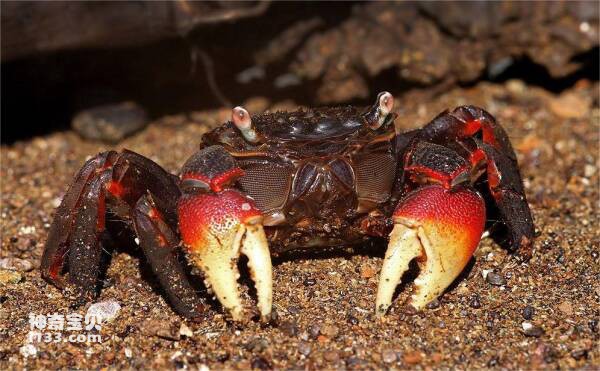
Each of these species has its own characteristics and is suitable for beginners to cultivate, while also bringing fun to pet lovers. By understanding the characteristics and habits of these ornamental crabs, you can better care for them and enjoy the company of these unique pets. Hopefully this list will help you better understand and choose the ornamental crab species that is right for you.
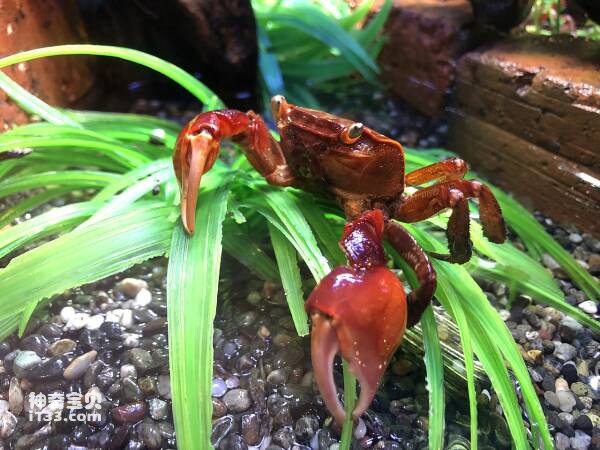
The red-chelated hand crab is one of the most common freshwater ornamental crabs currently on the market, and it is also a crab native to China. They can be found in many coastal areas of China. They usually inhabit the mud banks of offshore freshwater rivers or nearby swamps. They like to move deep in caves and sometimes even climb tree trunks. Red-chelated hand crabs are not only easy to raise, but also relatively affordable, making them the first choice for many novice crab farmers.
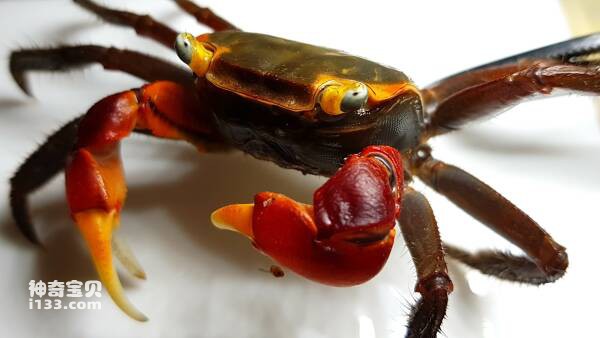
When raising red-clawed hand crabs, the ambient temperature generally needs to be kept at room temperature. They are omnivores and prefer to eat mainly meat. They can eat turtle food and other foods, but it is best to avoid feeding apples, melon rinds and other foods that may not be suitable for their digestion.
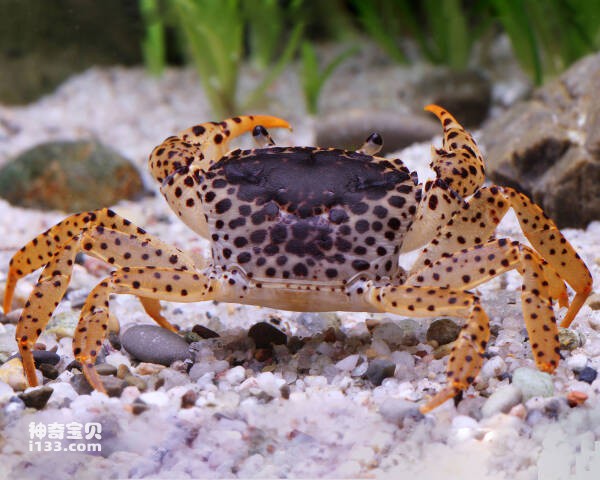

The leopard-spotted corset crab, commonly known as the leopard-spotted crab, is one of the ornamental crabs suitable for novices to breed. As one of the few river crab species suitable for deep water breeding, their legs and claws are usually orange-red, and their entire body is covered with brown spots, just like the markings of a leopard. They are very charming and have high ornamental value. In addition, the leopard-spotted corset crab is one of the very few crabs that is completely aquatic and can be fully submerged in water for long periods of time without dying of suffocation, making it a crab that can coexist peacefully with freshwater fish. Features are rare.
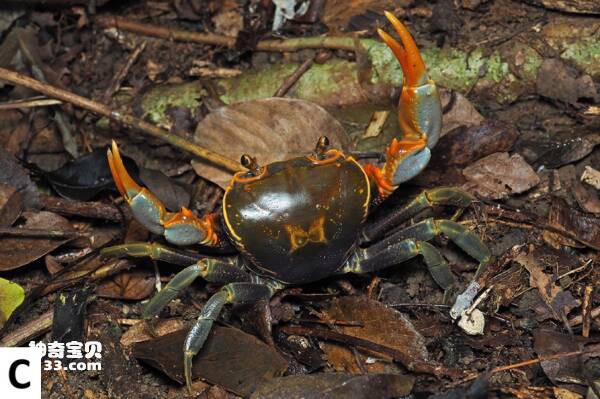
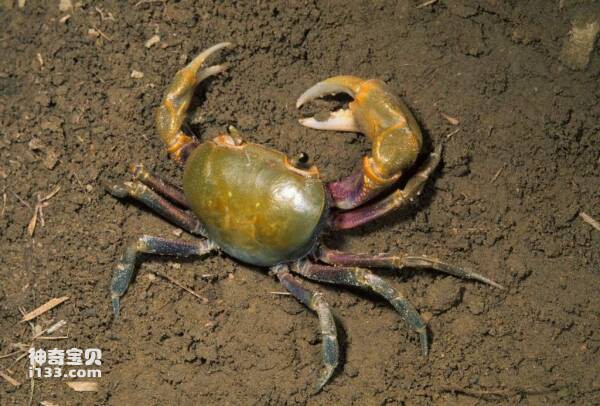
Among the easy-to-raise pet crabs, the South China Sea crab is also a popular one. As a native species in China, Nanhai creek crabs are large in size, aggressive in behavior, and come in bright and varied colors, including blue-gray, dark green, red and brown. These characteristics have attracted much attention in recent years. They mainly inhabit mountain streams, and many different species have gradually formed due to the isolation of various regions. It is important to note that Nanhai Creek crabs and Su crabs cannot be mixed, otherwise both sides will suffer.
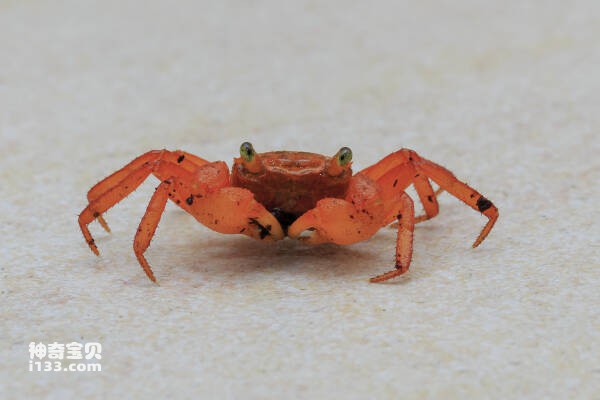

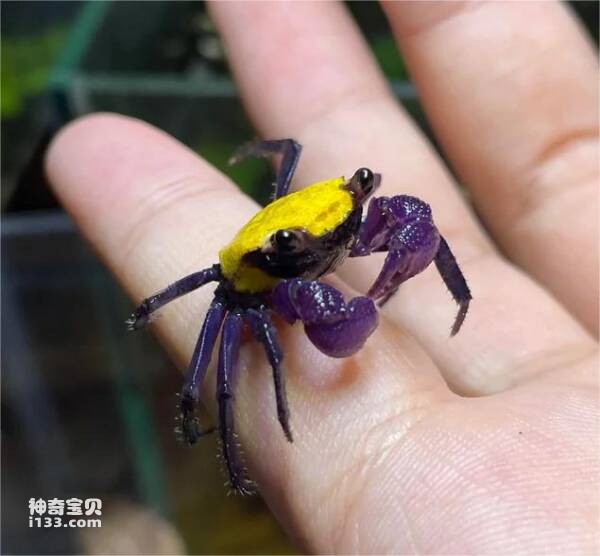
The vampire crab, also known as the devil crab, is known as one of the most popular ornamental crab species. It is famous for its wide variety, bright colors, and fierce personality. One of its characteristics is that its eyes glow, showing a striking yellow light. With a slightly evil and terrifying appearance, it is indeed worthy of its name. Common devil crab varieties include hell devil crab, blue-backed devil crab, porcelain doll devil crab, red apple devil crab, gold dust devil crab and electroplated devil crab.
These crabs usually come from tropical areas, so they have high temperature requirements and need to be provided with equipment such as heating pads to meet their living needs. Although they are picky about temperature, vampire crabs are generally relatively easy to feed.
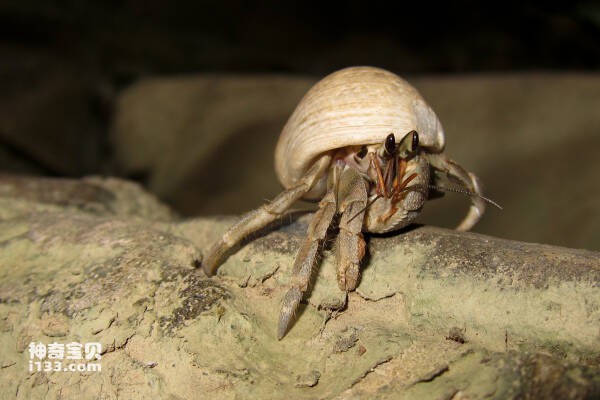
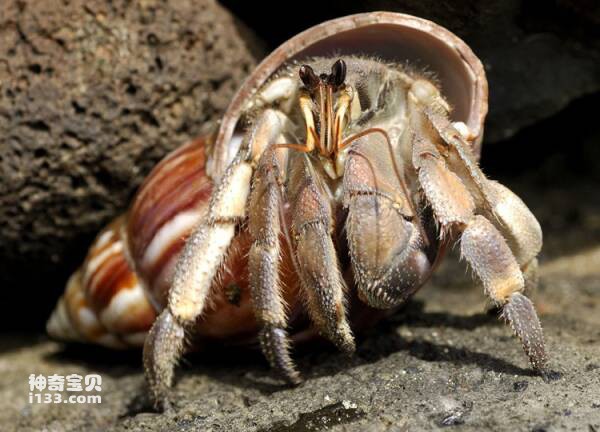
In the ranking of easy-to-raise pet crabs, gray and white hermit crabs stand out and become one of the most popular species. Hermit crabs have emerged in the United States as famous as reptiles and are becoming more and more popular domestically. The gray and white hermit crab is a highly sought-after species in this field. It is small in size and changeable in appearance. It is one of the most colorful representatives of hermit crabs.
This breed has a lively and bold character, likes to climb and molt, and is able to interact with its owners, showing a relatively high IQ. Therefore, raising gray and white hermit crabs can be a great pleasure, especially for beginners. Hopefully this information will help those interested in keeping pet hermit crabs gain a fuller understanding and appreciation of this lively and lovable species.
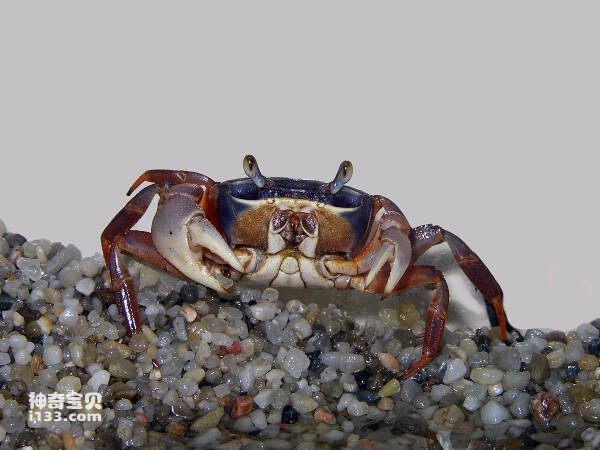

The armed crab, also known as the common rainbow crab, is a species that attracts a lot of attention in the pet market. Adults are sometimes nicknamed "soapbox crabs" by merchants, due to their relatively aggressive nature. To prevent cannibalism during transportation, they are often sold in soap boxes. In addition to being aggressive towards the same kind, the armed crab also preys on smaller crabs, small reptiles and amphibians, molluscs, fish, insects and other creatures. The diet is very wide and rich, and almost everything is eaten. Not eating. The appearance of this type of crab is colorful, highly ornamental and attractive.
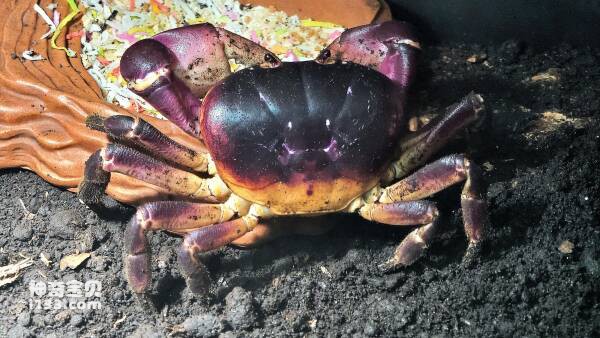

Among the choices of ornamental crabs, purple ground crabs are also a good choice. It is mainly distributed in the Philippines, Indonesia, various islands in the Indian Ocean, as well as China's Taiwan Island and Paracel Islands. Purple ground crabs live in seawater environments, usually in moist crevices on land. This type of crab is one of the most terrestrial species and can stay out of water for a long time, so there is no need to worry too much about water quality when raising it.
The appearance color of the purple ground crab is similar to that of a purple potato, which is very beautiful and gives people a unique visual enjoyment. However, as saltwater crabs, in order to provide them with a suitable living environment, farmers need to set up seawater pools for them.
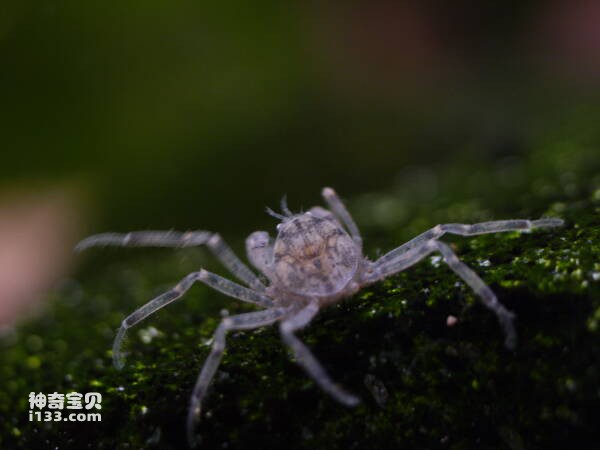
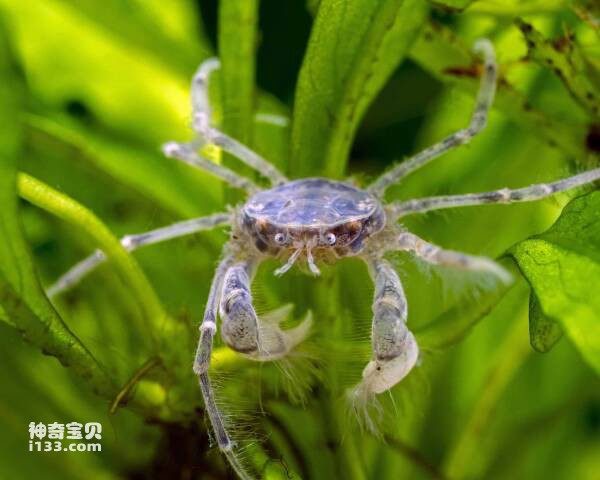
If you’re not sure which freshwater crab to choose to keep, I personally highly recommend the Mini Spider Crab. The crab is named for its hairy body, long appendages and petite, round body that resembles a small spider. The mini spider crab has eight long legs and a melancholic face. The first two legs end in two tiny claws that look like arrows. They are very small in size, with the largest individual not exceeding 1 cm in size, and their appearance and color are similar to black-shell shrimps.
Mini spider crabs are relatively easy to raise in captivity and are ideal for placement in a reef tank. But the price is not cheap.
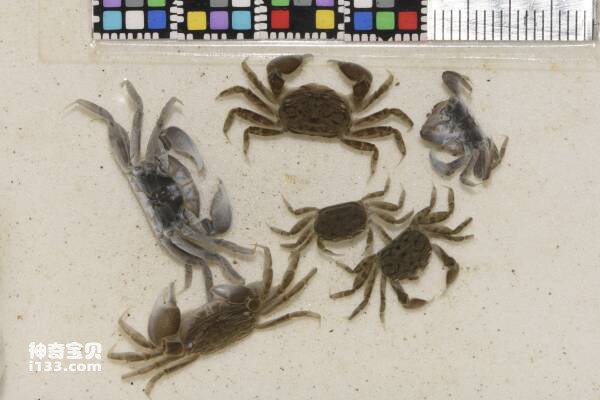
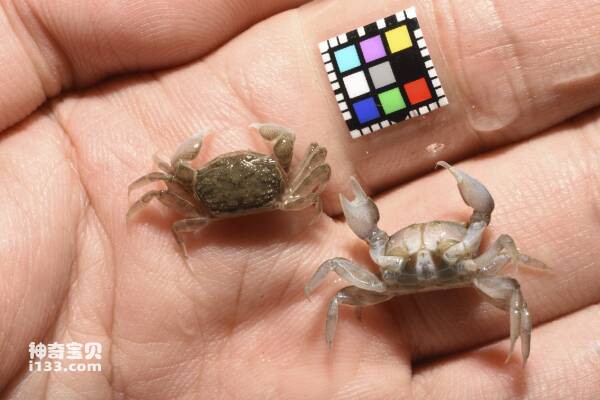
Tan's mud crab, also known as the pepper crab that has attracted much attention in recent years, is widely distributed in Japan, the east coast of North Korea, and Jiangsu, Shandong, Bohai Bay and Liaodong Peninsula in mainland China. This kind of crab mainly inhabits river estuaries and tidal flats, and likes to live in caves. Because they have strong salt tolerance and can survive in soda and fresh water, they are highly adaptable.
Tan's mud crabs have the ability to sense themselves and can amputate damaged feet on their own and quickly recover through cell division, demonstrating amazing regenerative capabilities. However, it should be remembered that it should never be kept in deep water.
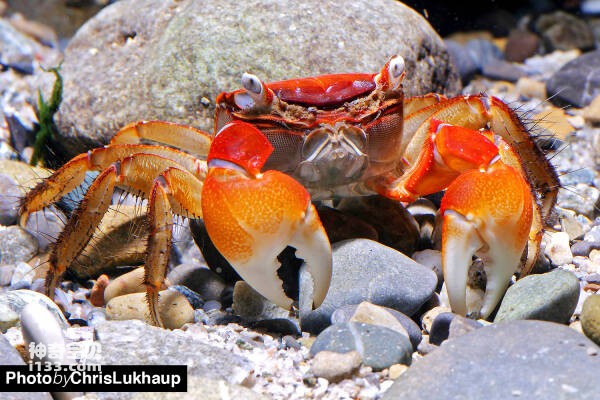
Red pliers The scientific name of the red-chelated hand crab is called Chinese imitation hand crab, and it is also a common species among ornamental crabs. Its body color varies widely, ranging from dark red to bright red, and the carapace on the back of individual individuals may appear darker greenish red. The chelipeds of this crab gradually transition from red to white from the metacarpal joint to the end. The legs are usually orange, and the ventral surface is white. These features make it very attractive to watch.
Because red-chelated crabs are euryhaline animals, they can adapt to a wide range of salinity requirements and can even adapt well to changes in salinity.
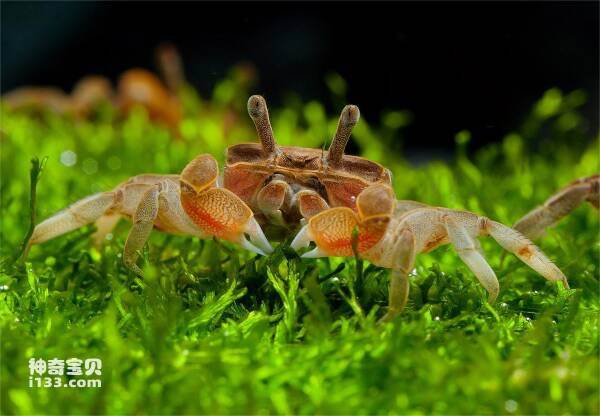
The top ten types of ornamental crabs that are easy to raise are based on comprehensive Internet-related rankings and lists. These ornamental crabs have their own characteristics and are suitable for aquarium enthusiasts to breed. If you have any questions or more insights about this recommendation, please leave comments and corrections so that everyone can share more accurate and comprehensive information.
animal tags:
We created this article in conjunction with AI technology, then made sure it was fact-checked and edited by a Animals Top editor.